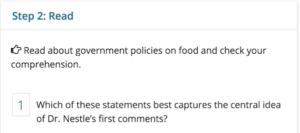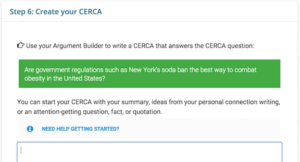If you’re like me, you know that one of the most important things a teacher can do is to train students in how to analyze problems and effectively propose solutions or demonstrate understanding. It’s a complex task, but one that lends itself to lifelong expertise in critical thinking and problem-solving for the students who can master the skill properly. You’ll also find that these skills are popping up on more and more end-of-year state assessments.
But getting all students in a classroom – some of whom are performing at vastly different skill levels – to digest, comprehend, and think critically about the information presented to them is tough. It’s just tough. So what can teachers do, in order to help students gain these complex skills they need for career and college readiness?
Evidence-Based Argument
For one, we can break it down for them. One way you can help students master argumentative writing is to use ThinkCERCA’s Applied Reading & Writing lessons. These lessons walk students through the process of developing formal written arguments about debatable topics. I was excited to hear that by focusing on literacy and using this platform, one Georgia district saw notable improvements in students’ end-of-year assessments.
You can take a look at the ThinkCERCA Grade 12 lesson, “What Role Should Government Play in Combating Obesity?” to see how teachers can help their students build critical thinking and writing skills.
Building an argument in six simple steps:
Connect: Using background knowledge of the topic, students should think of personal experiences that bear some relationship with the theme. If the topic doesn’t affect their life directly, ask students to imagine how their lives could be impacted if the topic did involve them.
Read: With a critical lens, students should consume the information carefully. Does the author have biases? Are all sides considered? Is the information up-to-date? It’s also good practice to provide short questions as a check for comprehension.


Build an Argument: It’s outline time. ThinkCERCA recommends students first identify their claim, and jot down reasoning, evidence, and counterarguments to use in their argument.
Create your CERCA Argument: After having soundly engaged and connected with the text by using a critical lens, students are now prepared and empowered to write their evidence-based argument. In doing so, students should also be mindful of the language they use. Who is the audience of their argument? Certain phrases may make sense to some readers, but not all.
Visit ThinkCERCA’s website to check out their other resources!











